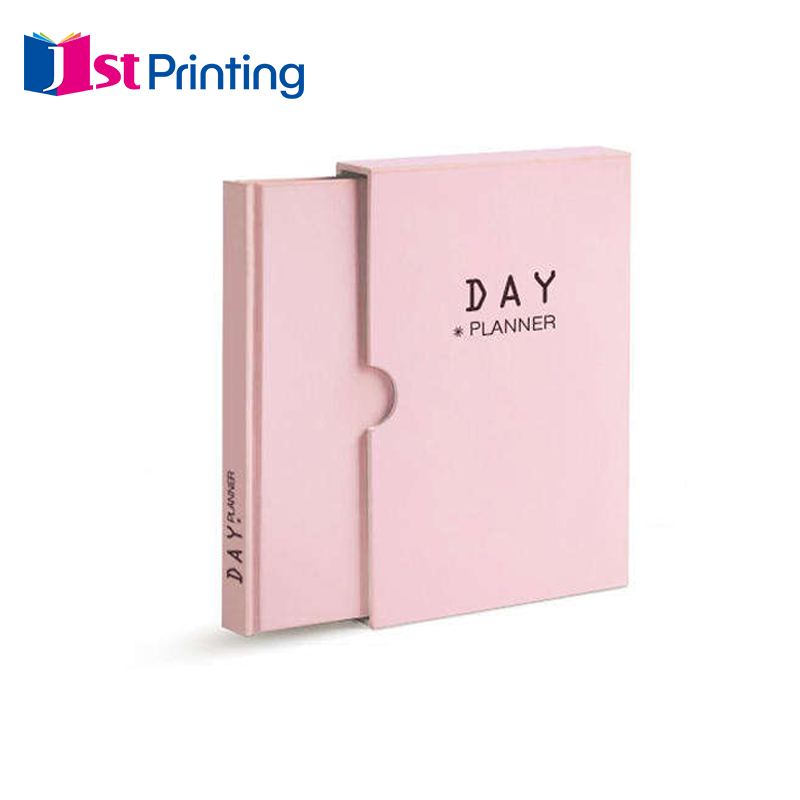إنشاء تعبئة مستدامة تبرز
فهم التعبئة والتغليف المستدام
عندما نتحدث عن التعبئة المستدامة، فإننا نعني حقًا النظر في المواد والأساليب التي تسبب ضررًا أقل للكوكب مع إنجاز المهمة على أكمل وجه. لم تعد التعبئة التقليدية كافية بعد الآن لأنها تخلق كميات هائلة من النفايات وتترك وراءها مشكلات بيئية. والأخبار الجيدة هي أن هناك بدائل أفضل في السوق الآن. وتشمل بعض الأمثلة المواد التي تتحلل بشكل طبيعي بمرور الوقت، والمنتجات المصنوعة من مواد معاد تدويرها، وحتى مواد حديثة مثل البلاستيك الحيوي. تُصنع هذه البلاستيكات الحيوية من النباتات بدلًا من النفط، وهي حقيقة قد لا يدركها الكثير من الناس. ما الذي يجعلها مميزة؟ حسنًا، عادةً ما تختفي هذه المواد من المكبات أسرع بكثير من البلاستيك العادي، وهو أمر مفيد بشكل واضح لأي شخص يهتم لمصير المنتج بعد انتهاء دورة حياته.
لقد تغير عالم التعبئة والتغليف بشكل ملحوظ في الآونة الأخيرة من حيث الاهتمام بالبيئة. يهتم المزيد من الأشخاص بما يحدث لكل تلك الصناديق والأكياس بعد استخدامها. وقد لاحظت الشركات أيضًا هذه الظاهرة، لذا نحن نشهد زيادة حقيقية في الطلبات الخاصة بمواد التعبئة التي لا تضر بالكوكب. ما يثير الاهتمام هو أن هذا التغير لا يحدث فقط في مكان معين بل في مختلف البلدان حول العالم. تسارع الأسواق من أوروبا إلى آسيا والمحيط الهادئ في السعي نحو خيارات تقلل من النفايات وتخفف البصمة الكربونية، مما يدل على أن الاستدامة لم تعد مجرد مصطلح رائج بل أصبحت قضية جادة بالنسبة للشركات في الوقت الحالي.
تلعب التغليف المستدام دوراً مهماً للغاية عندما يتعلق الأمر بخفض النفايات وحفظ مواردنا الطبيعية. عندما تعمل الشركات على تقليل الانبعاثات الكربونية الناتجة عن طرق التغليف الخاصة بها والتحول إلى مواد يمكن إعادة تدويرها فعلياً، فإنها تحدث فرقاً حقيقياً في مدى خضرة عملياتها الكلية. وبالإضافة إلى حفظ الموارد فقط، تساعد هذه العبوات الصديقة للبيئة في تقليل مشاكل التلوث ومنع مكبات النفايات من الاكتظاظ بالنفايات. هذا الأمر مهم لأننا نرغب في ترك كوكب نظيف وآمن للأطفال الذين يكبرون في يومنا هذا.
السمات الرئيسية للتغليف المستدام
عند السعي إلى تغليف مستدام يلفت الانتباه فعليًا، فإن معرفة المواد التي تؤدي أفضل أداءً تعتبر من الأمور المهمة جدًا. تنظر معظم الشركات إلى خيارات مثل المواد القابلة للتحلل (كالفطر أو الورق)، والمواد المعاد تدويرها والمتوفرة لدينا بالفعل، وكذلك بعض الموارد المتجددة مثل منتجات الصوف أو الأعشاب البحرية. المهم هنا هو اختيار مواد تحدث فرقًا حقيقيًا للبيئة. يجب أن تساهم في تقليل الضرر البيئي بطريقة أو بأخرى، سواء عن طريق خفض الانبعاثات الكربونية أو ببساطة تقليل كمية النفايات بشكل عام. خذ على سبيل المثال تغليف الفطر. يُصنع هذا التغليف من هياكل جذرية صغيرة تُعرف باسم المايسيليوم، ويتحلل بالكامل عند وضعه في التسميد، ويعود إلى الطبيعة دون أن يترك أي فوضى وراءه. يعمل الورق المعاد تدويره أيضًا بشكل جيد أيضًا نظرًا لإمكانية إعادة تدويره عدة مرات مع الحفاظ على جودة ووظيفة مقبولة.
يُعد الشكل الذي يظهر به شيء ما مهمًا جدًا عندما يتعلق الأمر بجعل التغليف جذابًا وصديقًا للبيئة في الوقت نفسه. إن التصميم الجيد يتجاوز مجرد المظهر الجذاب على رفوف المتاجر، بل يجب أن يتضمن أيضًا جوانب عملية تسهل فتح العبوة والتخلص منها بسهولة بعد الاستخدام. نحن نشهد في الوقت الحالي بعض الحلول الإبداعية حقًا، مثل تلك العبوات المصنوعة من الفطر والتي تأتي بأشكال متنوعة أو العناصر الورقية التي تُشكَّل في أشكال غير اعتيادية. هذه التصاميم ليست جذابة فحسب، بل إنها تعمل بشكل أفضل أيضًا مع استخدام موارد أقل وتحلل بسهولة أكبر مقارنة بالمواد التقليدية. أما بالنسبة للشركات التي تحاول أن تكون أكثر صداقة للبيئة دون التفريط في الجاذبية البصرية، فإن هذه الابتكارات تمثل تقدمًا حقيقيًا نحو الوصول إلى نقطة التوازن التي تلتقي فيها الجمال والاستدامة.
عندما يتعلق الأمر بكيفية شعور الناس بالتعبئة المستدامة، فإن معظمهم يستجيب في المقام الأول لما يرونه – الألوان والصور على الصندوق أو الحقيبة. بدأت الشركات تدرك أن استخدام ألوان طبيعية مثل البني والأخضر وألوان مستوحاة من الطبيعة يساعد في إيصال رسالة تعكس اهتمامها بالتحول نحو الطرق الصديقة للبيئة. هذه الخيارات اللونية تخلق رابطًا حقيقيًا بين العلامة التجارية والعملاء الذين يفكرون بالفعل في الأثر البيئي لاختياراتهم. الصور الفعلية مهمة أيضًا. عندما تعرض التعبئة ميزات مثل المواد المعاد تدويرها أو المكونات القابلة للتحلل، فإنها تحكي قصة عن المبادئ التي تدافع عنها الشركة. الاستخدام الذكي للعناصر البصرية لا يجعل المظهر جذابًا فحسب، بل تميل العلامات التجارية التي تتقن هذا الأمر إلى بناء علاقات أقوى مع جمهورها، مع التأكيد على أن الجميع يدرك أن جهودها تصب في صالح الكوكب.
إدراج مواد صديقة للبيئة
تمثل البلاستيكيات الحيوية شيئًا مهمًا حقًا للتغليف المستدام لأنها تتحلل بشكل طبيعي وتأتي من مصادر متجددة. تصنع هذه المواد غالبًا من مكونات مثل نشا الذرة أو مكونات أخرى مستخلصة من النباتات، مما يعني أنها تضر بالبيئة بشكل أقل بكثير من البلاستيك التقليدي المستخرج مباشرة من النفط. فعلى سبيل المثال فيما يتعلق بإصدارات الكربون، تشير الدراسات إلى أن تصنيع البلاستيكيات الحيوية يمكن أن يقلل من هذه الانبعاثات بنسبة تصل إلى 70٪، وهو أمر مثير للإعجاب عند النظر في الصورة الكاملة. ومع محاولتنا التصدي لتلك الأكوام الكبيرة من النفايات البلاستيكية التي تراكمت في كل مكان، فإن البلاستيكيات الحيوية توفر حلاً حقيقيًا يستحق النظر إليه إلى جانب البدائل الأخرى.
إلى جانب البلاستيك الحيوي، تلعب مواد مثل الزجاج والألمنيوم والورق دوراً مهماً في حلول التعبئة والتغليف الخضراء. يبقى الزجاج بنفس الجودة حتى بعد إعادة تدويره مراراً وتكراراً، في حين تتم إعادة تدوير الألمنيوم حوالي ثلاثة أرباع المرات في أمريكا وفقاً لما قرأته. ويظل الورق خياراً شعبياً للتعبئة والتغليف لأنه يمر عبر نظام إعادة التدوير بشكل جيد إلى حد ما، على الرغم من أن فعاليته الفعلية تعتمد بشكل كبير على الحفاظ على النظافة قبل وصوله إلى سلة المهملات. عندما تتحول الشركات إلى هذه المواد، فإنها تقلل الحاجة إلى المواد الخام الجديدة المستمدة من الطبيعة. هذا يخلق نوعاً من الدورة حيث يصبح النفايات مورداً مرة أخرى، مما يساعد الشركات على توفير المال ويبقي كوكبنا أكثر صحة في الوقت نفسه.
تكتسب خيارات التعبئة الجديدة المصنوعة من الفطر والطحالب انتشاراً سريعاً هذه الأيام. يأتي مادة الفطر من شيء يسمى 'المايسليوم'، وقد بدأت شركات مثل Ecovative بالفعل في تصنيع صناديق وحاويات منها، وهذه المواد تتحلل بشكل طبيعي عند التخلص منها. وهناك أيضاً تعبئة مصنوعة من الطحالب. تعمل شركة تسمى Notpla على هذا النوع من التعبئة حالياً، وما يميزها هو أنها لا تختفي فقط بعد الاستخدام، بل يمكن تناولها فعلياً! كل هذه التطورات تشير إلى أمر أكبر يحدث في عالم مواد التعبئة. إذ يبحث المزيد من الشركات عن بدائل خضراء حقيقية، بدلاً من مجرد التظاهر بالاهتمام بالبيئة مع الاستمرار في استخدام البلاستيك في كل مكان.
أمثلة ناجحة عن التعبئة والتغليف المستدام
تُبرز عدد من الشركات مجهوداتها في مجال حلول التغليف الصديقة للبيئة، حيث تغيّر الطريقة التي تظهر بها منتجاتها على أرفف المتاجر وتؤثر في قرارات غيرها. فعلى سبيل المثال، شركة سيلستيال سيزونينجز (Celestial Seasonings) عززت جهودها بشكل كبير في مجال التغليف الذي يراعي البيئة. تحتوي علب الشاي الخاصة بها على ما يقارب 35 بالمئة من الورق المعاد تدويره، والمُستخرج من مستهلكين استخدموا هذه المواد سابقًا. وفي داخل العلب، تأتي أكياس الشاي الفردية ملفوفة بمواد تتحلل طبيعيًا مع مرور الوقت. ويبدو أن المستهلكين الذين يشترون هذه المنتجات يقدرون هذا الجهد، مما يسهم في بناء الثقة بين العلامة التجارية وعملائها، إلى جانب تقليل كمية النفايات التي تذهب إلى المكبات. ومن الجهات الأخرى التي تجدر الإشارة إليها شركة آتيتيود (Attitude)، التي تبيع مستحضرات التجميل والمنظفات المنزلية. إذ بدلًا من استخدام عبوات صغيرة الحجم، تقوم بتعبئة منتجاتها في عبوات أكبر حجمًا توفّر حوالي 80 بالمئة من البلاستيك المطلوب عادةً للعبوات الأصغر. إن هذا النوع من التفكير يجعلها متقدمة على العديد من منافسيها من حيث الصديقة للبيئة، دون التضحية بالجودة أو الراحة.
تشير الأمثلة الواقعية إلى الفوائد الكبيرة التي تحققها الشركات عندما تتحول إلى حلول تغليف صديقة للبيئة. دعونا نبدأ بمثال شوكولاتة مونتيزوما. ومقرها المملكة المتحدة، وقد قامت مؤخرًا بإعادة تصميم استراتيجيتها في التغليف بالكامل. بدلًا من الاعتماد على البلاستيك، أصبحت تستخدم الآن برطمانات زجاجية لمنتجاتها مع صناديق من الورق المقوى قابلة لإعادة التدوير. هذا التغيير لا يساعد فقط في تقليل النفايات، بل يجعل العملاء يرون الشركة على أنها أكثر اهتمامًا بالبيئة. ومثال آخر مميز هو شركة Boxed Water. فقد توقفت هذه الشركة عن بيع المياه في زجاجات بلاستيكية تقليدية منذ عام 2013، وبدأت بعرض مياهها في عبوات ورقية خاصة مصنوعة بشكل أساسي من مواد نباتية (حوالي 92%). وتؤكد الشركة أن هذا التحول قلل بشكل كبير من تأثيرها البيئي. ما نراه هنا دليل واضح على أن الانتقال إلى خيارات تغليف أكثر خضرة يعمل بشكل جيد للشركات التي ترغب في خفض التكاليف مع جذب المستهلكين الواعين للبيئة في الوقت الحالي.
المنتجات التي يجب النظر فيها لتعبئة التغليف المستدام
عند التفكير في خيارات التعبئة والتغليف المستدامة، من الجدير بالاعتبار كيف يمكن أن تؤدي الأشياء اليومية مثل المخططات والجدول الزمني إلى إحداث فرق. المخططون الجيدون ليسوا فقط عن تتبع الاجتماعات هم أيضا يدعمون أهداف الاستدامة عندما تصنع من المواد المعاد تدويرها بدلا من الورق العذراء. خذ تلك المجلات التي يحبها الناس كثيراً هذه الأيام العديد من العلامات التجارية تقدم الآن إصدارات باستخدام مواد نفايات بعد الاستهلاك. بالحديث عن البدائل، القراءة الرقمية غيرت الأمور قليلاً أيضاً. الكتب الإلكترونية من الواضح أنها تقلل من استخدام الورق تماماً، مما يعني أن عدد الأشجار التي يتم قطعها لإنتاج الكتب أقل، وأن القمامة أقل تنتهي في مكب النفايات مع مرور الوقت. و لا ننسى التقويمات أيضاً التقويمات الشهرية على الجدار لا تزال لها مكانتها على الرغم من كل أجهزةنا الرقمية أفضلها اليوم تأتي في صيغ قابلة لإعادة التدوير أو تستخدم أحبار نباتية مطبوعة على مخزون معتمد من FSC. يجد الناس أنها مفيدة للتخطيط البصري لكنهم يشعرون بتحسن بمعرفة أن مكتبهم ليس مليئاً بغطاء بلاستيكي لمرة واحدة أو صفحات لامعة لن تتحلل بشكل صحيح.



اختيار هذه المنتجات لا يدعم الممارسات المستدامة فحسب بل يثري الحياة اليومية باستخدام بدائل صديقة للبيئة.
نصائح لتنفيذ حلول التعبئة والتغليف المستدامة
يبدأ العمل على التعبئة المستدامة حقًا بالنظر بتمعّن في الأمور القائمة بالفعل، وتحديد الأماكن التي يمكن تحسينها. تحتاج الشركات إلى التعمق في الأساليب الحالية لديها، وتحديد المشاكل مثل استخدام الكثير من البلاستيك في التغليف، أو الصناديق التي تنتهي في مكبات النفايات بدلًا من صناديق إعادة التدوير. عندما تخصص الشركات وقتًا لإجراء هذا النوع من التقييم، فإنها تكتشف غالبًا طرقًا لتبسيط تعبئة منتجاتها مع التقليل من الأثر البيئي. معالجة هذه القضايا تعني تقليل كمية النفايات الخارجة، مما يوفّر المال على المواد الخام، ويُحسّن من سير العمليات اليومية أيضًا. أفادت العديد من الشركات الصغيرة أنها تمكّنت من خفض المصروفات بنسبة تزيد عن 30% بعد إجراء بعض التغييرات الذكية في طريقة تغليف منتجاتها.
يبقى تجربة المواد المستدامة جزءاً أساسياً من الانتقال نحو حلول تغليف أكثر خضرة. يبدأ العديد من الشركات باختبار نماذج أولية مصنوعة من مواد مثل البلاستيك المستمد من النباتات أو عجينة الورق المختلطة مع مواد معاد تدويرها. يساعد الحصول على هذه المواد من موردين يلتزمون بمعايير شهادات مناسبة في الحفاظ على ممارسات التوريد الأخلاقية عبر سلسلة التوريد بأكملها. الفوائد البيئية هنا واضحة إلى حد كبير. إن التبني المبكر لهذه البدائل الخضراء يمنح الشركات ميزة في السوق أيضاً. إذ يهتم الناس اليوم بشكل متزايد بالاستدامة عند اتخاذ قرارات الشراء، لذا تميل الشركات التي تتبني تغليفًا صديقًا للبيئة إلى التميز عن المنافسين الذين ما زالوا يعتمدون على المواد التقليدية.
عندما تخصص الشركات الوقت لتعليم الأشخاص كيفية إعادة التدوير بشكل صحيح، فإن ذلك يخلق شعورًا بالمسؤولية المشتركة ويعزز بشكل كبير من جهود الاستدامة. إن إعطاء إرشادات واضحة حول ما يحدث للتغليف بعد الشراء يُعد أمرًا مهمًا جدًا. كما أن العديد من الشركات الآن تتعاون مع مبادرات إعادة التدوير المحلية أيضًا. هذه الإجراءات تساعد في بناء الثقة مع العملاء الذين يهتمون بالقضايا البيئية، بينما تحقق تحسينات فعلية في المكان الذي يهم حقًا - داخل المجتمعات المحلية والنظم البيئية على حد سواء. إن الجمع بين هذه الجهود يُحدث عجائب في جعل خيارات التغليف الخضراء ممارسة قياسية بين الشركات الراغبة في إظهار اهتمامها بالعمليات الصديقة للبيئة، وكذلك في جذب المستهلكين اليوميين بطرق ذات معنى.
الاستنتاج: مستقبل التعبئة والتغليف المستدام
يصبح التغليف المستدام أكثر شيوعًا في الوقت الحالي، ويبدو أن هذا الاتجاه لن يختفي قريبًا. الشيء المثير للاهتمام في هذا الاتجاه هو كيفية دفع الشركات لتفكر خارج الصندوق، وفي الوقت نفسه زيادة مشاركة المستهلكين فيما يحدث لمنتجاتهم بعد الشراء. نحن نشهد ظهور جميع أنواع الأفكار الجديدة نتيجة لهذا الدفع نحو خيارات أكثر صداقة للبيئة. من المواد القابلة للتحلل إلى الحاويات القابلة لإعادة الاستخدام، هناك بالتأكيد تقدم يحدث. يواصل خبراء الصناعة إخبار أصحاب الأعمال أنهم بحاجة للانخراط في هذا التغيير إذا أرادوا البقاء في صدارة المنافسة. في النهاية، متى سنرى إعادة التدوير تصبح عادة روتينية ثانية بدلًا من شيء يتحدث عنه الناس دون أن يمارسوه؟ يجب أن يكون الهدف جعل التغليف المستدام هو القاعدة وليس استثناءً خاصًا في بعض الأسواق.























